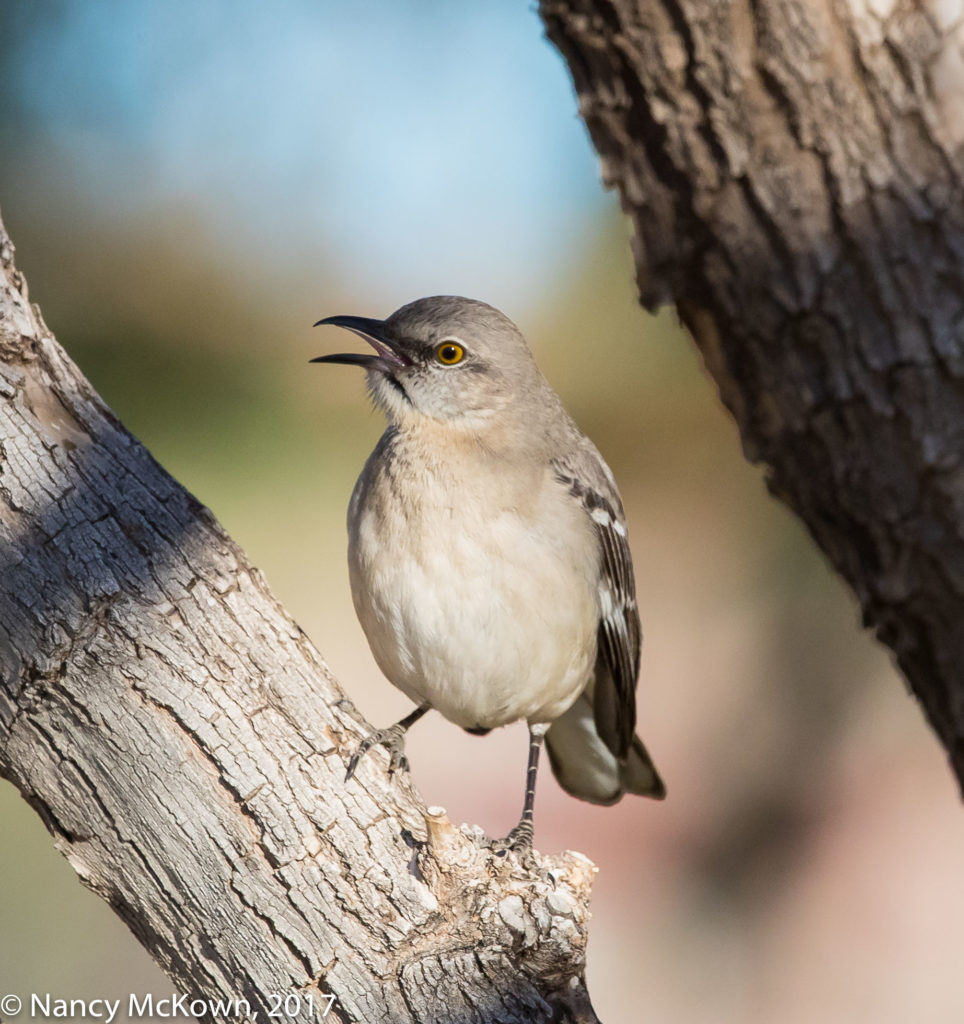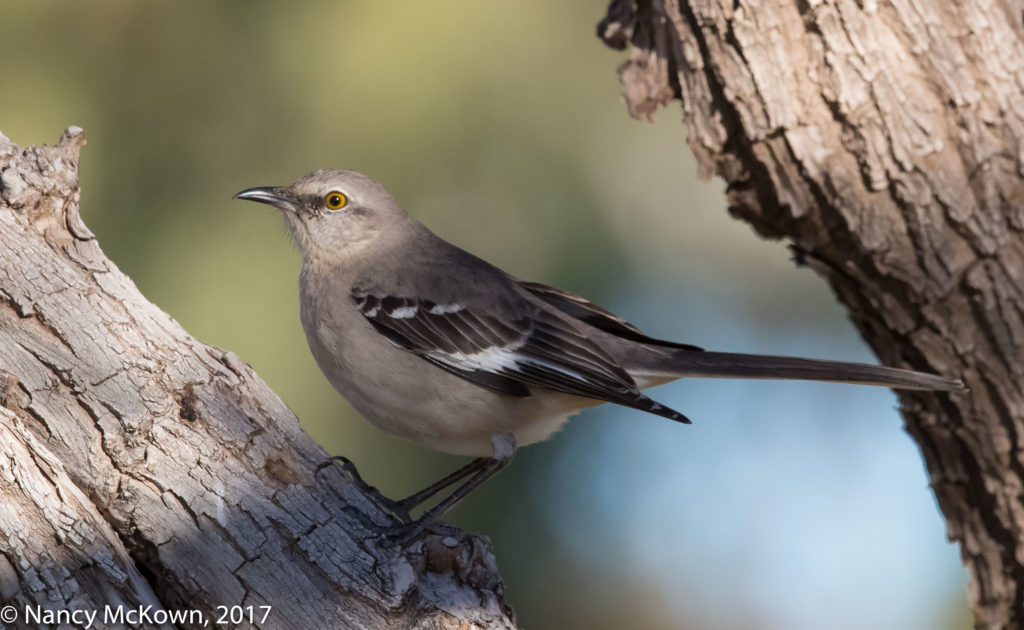Photographing a Northern Mockingbird
We were just getting going on our birding adventure when a Northern Mockingbird flew by and settled on a nearby camera level tree branch. I was excited that he was so close, not only because it is so much more gratifying to be physically close to a bird I’m photographing, but also because I did not have my longest telephoto lens with me.
This bird is not a common sight in SW Michigan, though the e-bird maps show them as prevalent and nesting in this region. Northern Mockingbirds remind me of another acoustically gifted mimic…the Brown Thrasher.

A Talented Vocal Mimic
ISO1600; f/9; 1/2000 Second
Branch Shadows Everywhere
I set up the tripod and camera, keeping my back to the mid-morning sun. The Mockingbird was constantly flitting about, so I set the shutter to 1/2000….. never mind (for now) the auto ISO shooting up to 2000. I kept a tight aperture (F/9) to increase my DOF as much as possible and keep his slanted body sharply in focus. The angle of sun light was rising fast…long past the time I could expect a complementary soft glow on my subject.
The bird’s face and body were lashed with unappealing shadows that had crisp high contrast edges from the branches and twigs on the trees. No natural reflectors were evident and the dark ground and tree branch perch were certainly not going to bounce light upward to the bird’s undersides.
My options were few:
- Wait for the bird to move to a more evenly lit location.
- Have my assistant (?) string up a large diffuser in the trees and hope the bird stays put.
- Move the tripod to a place that would not create such unsightly shadows.
- Shoot toward the sun..and try for a halo effect, being sure to spot meter the bird so exposure would not take into account the bright background.

Perpendicular to the Line of Sight- In Profile
ISO2000; f/9; 1/2000 Second
For most of this shoot, the bird and I were constantly on the move. After a while he hopped to less shadowy places, giving me the opportunity to photograph him in better light. The resulting images still show patches of uneven, blotchy light, especially in the background.
Quick Control Button
Once in a while during a shoot, I like to get out of my comfort zone. If the bird gives me more than a minute to photograph her, I relax and luxuriate in the added moments I have to be adventurous and test my photographic skills and knowledge. (An intellectual challenge…given the light and circumstances of the scene.)
In this instance, I used the Quick Control “Q” short cut to functionality located on the back of the camera. Without this convenient panel, I would have to stop and dig through multiple menus to make adjustments. This Quick Control button, allows me to quickly review the image settings currently applied and adjust (using the cross keys) whatever I please….. image size, quality, metering mode, drive mode, exposure settings, FEC, EC, picture styles, white balance, AF operation, etc.
NOTE: The Q panel is highly configurable allowing you to place those functions you use most- or want to experiment with- on the back Q panel and at your fingertips.

Looks Like She’s Consuming Some Sort of Seed Cluster.
ISO1250; f/9; 1/2000 Second
Experimentation
It’s stimulating to dabble in uncertainty and respond with agility- even if the result is a failure. Given time and opportunity, it’s fun to abandon the comfort and security of what you usually do and be adventurous. If it comes to nothing, it’s still a worthy intellectual exercise sure to come in handy sometime in the future.








